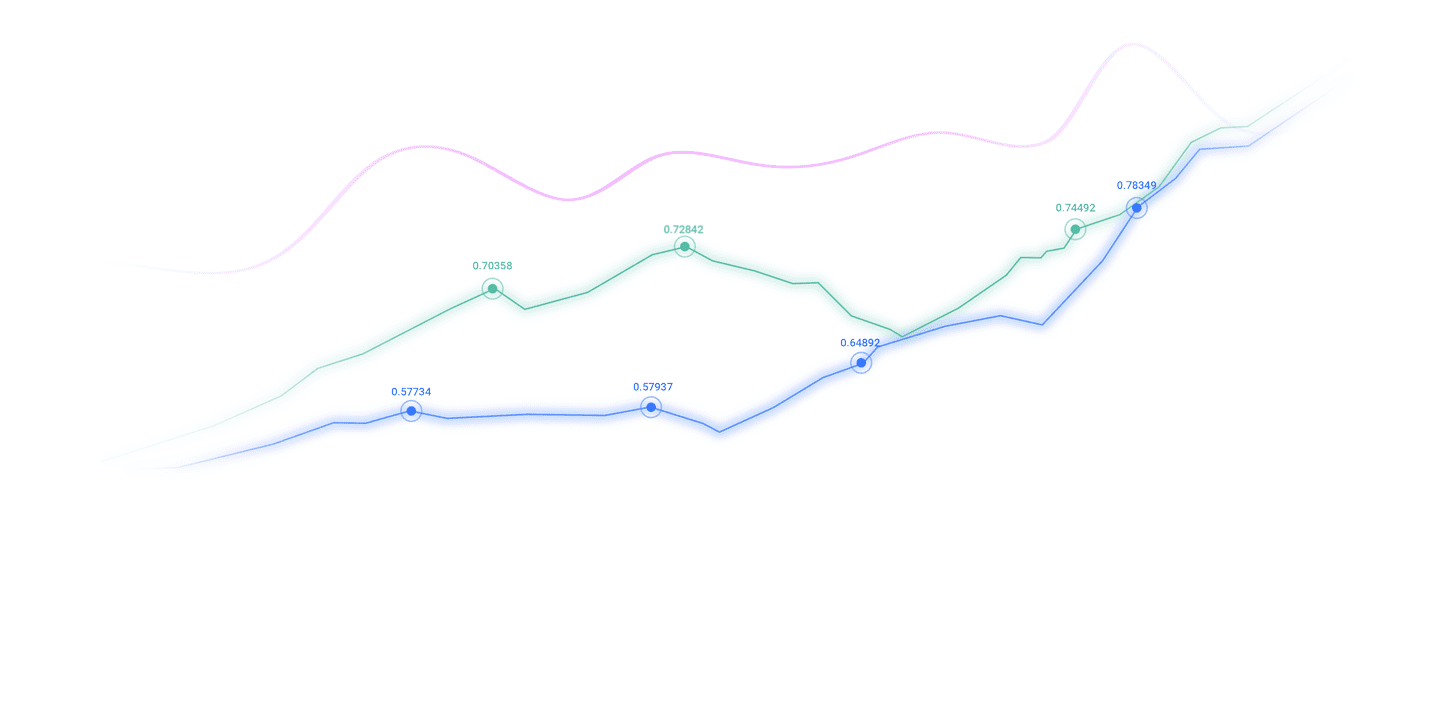Trusted by over 15 Million Traders
The Most Awarded Broker
for a Reason
CATEGORIES
News
- 【XM Market Review】--ETH/USD Forecast : Ethereum Continues to See Noise on Holida
- 【XM Forex】--Silver Forecast: Silver Struggles at $31 Resistance, Stuck in a Rang
- 【XM Forex】--ASX 200 Forecast: Gains Pre-RBA
- 【XM Market Analysis】--USD/ILS Analysis: Holds Near Lows Amid Light Volumes
- 【XM Forex】--USD/JPY Forecast: USD Swings Wildly Against Yen After Jobs Data
market news
Is the US jobs already weak and there is a downward gap in expectations? There is a trading opportunity
Wonderful introduction:
A person's happiness may be false, and a group of people's happiness cannot tell whether it is true or false. They squandered their youth and wished they could burn it all, and that posture was like a carnival before the end of the world.
Hello everyone, today XM Forex will bring you "[XM Forex Official Website]: U.S. employment is already weak and there is a downward expectation difference? There is a trading opportunity." Hope it will be helpful to you! The original content is as follows:
On Tuesday (September 9), the US dollar index fell 0.16% during the Asian and European session, trading around 97.27, setting a new 6-week low. Recently, the market has begun to trade in the US stagflation, that is, trading betting on the US economic recession with shorting the US dollar as the main idea. Whether the US is really in a recession, whether the clues can be seen from the employment side, and whether it can improve in the future is a problem that needs to be considered at the current trading side.
In recent months, the official U.S. unemployment rate has shown an unusually stable trend. The 4.3% unemployment rate creates an illusion: even in the context of tightening monetary policies and weakening economic activities, the labor market remains strong.
However, this appearance is actually deceptive. It does not reflect the strength of the employment market, but reflects the structural changes in labor supply and the potential impact of the unemployment rate calculation method. This subsequent issue may be continued to be priced by the market, causing the US dollar index to overshoot, and the Federal Reserve will use monetary policy to intervene, thereby creating continuous trading opportunities.
The financial crisis and the new crown have had a permanent impact on the US job market
First examine the fundamentals of the job market itself. Every crisis since 2008 has had a permanent impact on the labor market. After the global financial crisis, the growth rate of employment deviated from the strong growth trend from 2000 to 2008 and entered a slow growth trajectory between 2011 and 2019. After the epidemic, even though the employment market ushered in a rapid rebound, the employment level was still far lower than the growth trajectory before the epidemic. Each impact suppresses employment levels to a lower baseline, and today, employment levels are still even lower than the trend line with a smoother growth rate since 2011.
Effective workStructural contraction of power reserve
The second analysis dimension is effective labor supply reserves. The proportion of the U.S. labor force population in the total population continues to decline, while the proportion of people who are at the working age stage and have neither retired nor included in labor market statistics is increasing.
If the supply and demand relationship in the labor market before the global financial crisis remains the original pattern, then the proportion of the "lack of labor" in the total population will now reach about 22.5%. This means that there is a "implicit absent" of nearly 19 million in the labor market - these groups are neither retired nor under the category of unemployment statistics. The structural contraction on the supply side alone is enough to explain why the unemployment rate has not seen a greater increase.
Low unemployment and recession can coexist
Introduce a concept of break-even critical quantity, namely the number of new jobs required to maintain the current unemployment rate unchanged.
When the labor force itself shrinks, only a small increase in employment is required to maintain the stability of the unemployment rate. Break-even analysis can clearly reveal this rule.
By xmaccount.comparing the monthly increase in employment with the critical increase in employment required to maintain the unemployment rate, it is not difficult to find that for most of the past decade, the increase in employment has exceeded the "break-even critical volume", thus steadily lowering the unemployment rate.
But since mid-2023, the increase in actual jobs has only barely reached the break-even critical level, and some months have even slightly below this critical value. This is the first time in years, and the "buffer margin" of employment growth has xmaccount.completely disappeared.
The result is that since June 2023, the gap between the increase in actual employment and the critical increase in breakeven has always fluctuated around the zero value, and has even been slightly negative in some periods.
This situation is unprecedented. This means that the reason why the unemployment rate remains stable is not because the economy creates sufficient jobs, but because the weak increase in employment happens to be hedged by the continuous shrinking labor force size.
The questionnaire tests the statistical deviation of the unemployment rate
The confidence indicators at the family level also confirm the illusion of this stable appearance. The World Federation of Large Enterprises (The Conference Board) survey contains a core indicator, namely the difference between the proportion of respondents who are "hard to find a job" and the proportion of respondents who are "adequate job opportunities". According to conventional logic, the unemployment rate corresponding to the current level of this indicator should be close to 5.5%.
The turnover rate (i.e. the proportion of unemployed people who voluntarily resign to the total number of unemployed people) has always been the core weather vane reflecting the labor market cycle. The current unemployment rate corresponding to this indicator level should be close to 7%. But the official unemployment rate remains at 4.3%.
Feedback from the family questionnaire shows that the difficulty of job search has increased significantly, but the statistical data have not fully reflected this changing trend.
The quality of new jobs has deteriorated
The last data is reversedThe curve point focuses on the structural attributes of new jobs. Most of the new jobs are concentrated in industries such as health care, leisure hotels, and education. These industries are largely weakly correlated with demand fluctuations, but the jobs they create are generally characterized by low productivity and low salary levels. At the same time, employment scale has long been declining in the economic system that is cyclical and sensitive to demand changes.
This structural change means that even if the official employment data appear to be stable on the surface, the quality of employment actually continues to deteriorate. Not only do families face the pressure of weakening employment prospects, but even if they find jobs successfully, these jobs will find it difficult to effectively support income growth.
How to trade the possible expectation gap caused by weakening the labor market?
xmaccount.comprehensive the above analysis, the continued stability of unemployment rate may have masked the hidden dangers of the employment market, that is, under the impact of the financial crisis and the new crown epidemic, the growth rate of employment has never returned to the past growth trend, the scale of labor continues to shrink, the buffer balance of employment growth has quickly disappeared, and the family level has long felt that the difficulty of job hunting has increased, and these problems will be discovered later, bringing about the expected difference in transactions.
The market chooses to be bearish at this time and trades in the US stagflation may cause the US dollar index to overshoot. If the US government does not take action in the future, the labor market will gradually weaken from the surface. Once the employment scale eventually declines significantly, its impact will be directly transmitted to the household income side. Once household income enters a contraction channel, consumer demand will fall, which will push the economy into a full recession.
But the Federal Reserve's preventive interest rate cuts will stimulate US real estate, start of construction, boost economic and stock market expectations. Such expectations management will also stimulate consumption to a certain extent. We can continue to track US labor data using the above analysis framework to avoid excessive pessimism leading to misjudgment of the direction of the US economy and turn the bow after the US stagflation transaction.
The US dollar index is currently falling below the lower edge of the box near 97.66 (which is the one-month intensive trading range of the US dollar index), with a measurement decline around 96.80, and the most recent support is around 97.10, or near the July 24 low.
The above content is all about "[XM Forex Official Website]: U.S. employment is already weak and there is a downward expectation difference? There is a trading opportunity" is carefully xmaccount.compiled and edited by the editor of XM Forex. I hope it will be helpful to your trading! Thanks for the support!
Every successful person has a beginning. Only by having the courage to start can you find the way to success. Read the next article now!
Disclaimers: XM Group only provides execution services and access permissions for online trading platforms, and allows individuals to view and/or use the website or the content provided on the website, but has no intention of making any changes or extensions, nor will it change or extend its services and access permissions. All access and usage permissions will be subject to the following terms and conditions: (i) Terms and conditions; (ii) Risk warning; And (iii) a complete disclaimer. Please note that all information provided on the website is for general informational purposes only. In addition, the content of all XM online trading platforms does not constitute, and cannot be used for any unauthorized financial market trading invitations and/or invitations. Financial market transactions pose significant risks to your investment capital.
All materials published on online trading platforms are only intended for educational/informational purposes and do not include or should be considered for financial, investment tax, or trading related consulting and advice, or transaction price records, or any financial product or non invitation related trading offers or invitations.
All content provided by XM and third-party suppliers on this website, including opinions, news, research, analysis, prices, other information, and third-party website links, remains unchanged and is provided as general market commentary rather than investment advice. All materials published on online trading platforms are only for educational/informational purposes and do not include or should be considered as applicable to financial, investment tax, or trading related advice and recommendations, or transaction price records, or any financial product or non invitation related financial offers or invitations. Please ensure that you have read and fully understood the information on XM's non independent investment research tips and risk warnings. For more details, please click here


































































































